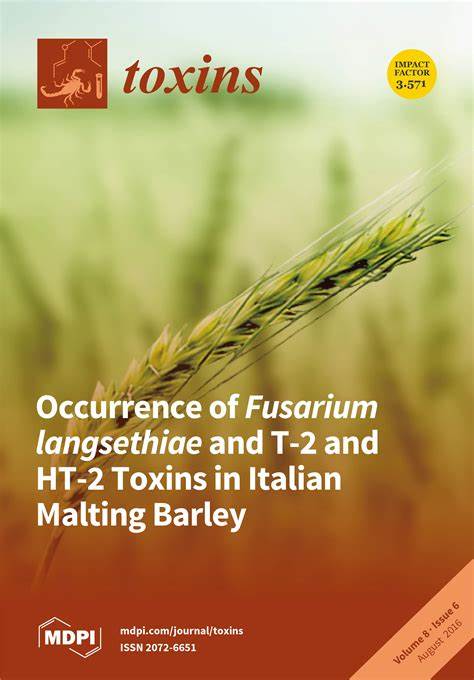X-ray Irradiation Reduces Live Aspergillus flavus Viability but Not Aflatoxin B1 in Naturally Contaminated Maize
IF 3.9
3区 医学
Q2 FOOD SCIENCE & TECHNOLOGY
引用次数: 0
Abstract
Food crops around the world are commonly contaminated with Aspergillus flavus, which can produce the carcinogenic mycotoxin aflatoxin B1 (AFB1). The objective of this study is to test an X-ray irradiation sterilization method for studying AFB1 in contaminated maize samples in the laboratory. Maize that had been naturally contaminated with 300 ppb AFB1 by the growth of aflatoxigenic A. flavus was ground and then irradiated at 0.0, 1.0, 1.5, 2.0, 2.5, and 3.0 kGy. A. flavus was quantified by dilution plating on potato dextrose agar (PDA) and modified Rose Bengal media (MDRB) for viability and qPCR for gene presence. AFB1 was quantified by HPLC and ELISA. A. flavus viability, but not gene copies, significantly decreased with increasing doses of radiation (PDA: p < 0.001; MDRB: p < 0.001; qPCR: p = 0.026). AFB1 concentration did not significantly change with increasing doses of radiation (HPLC: p = 0.153; ELISA: p = 0.567). Our results imply that X-ray irradiation is an effective means of reducing viable A. flavus without affecting AFB1 concentrations. Reducing the hazard of fungal spores and halting AFB1 production at the targeted dose are important steps to safely and reproducibly move forward research on the global mycotoxin challenge.X 射线辐照能降低天然污染玉米中黄曲霉菌的存活率,但不能降低黄曲霉毒素 B1 的含量
世界各地的粮食作物普遍受到黄曲霉菌的污染,黄曲霉菌可产生致癌的霉菌毒素黄曲霉毒素 B1(AFB1)。本研究的目的是测试一种 X 射线辐照灭菌法,用于在实验室研究受污染玉米样本中的 AFB1。将因黄曲霉毒素黄曲霉菌的生长而自然污染了 300 ppb AFB1 的玉米磨碎,然后用 0.0、1.0、1.5、2.0、2.5 和 3.0 kGy 的射线进行辐照。在马铃薯葡萄糖琼脂(PDA)和改良玫瑰孟加拉培养基(MDRB)上稀释培养,检测黄曲霉的活力,并通过 qPCR 检测基因的存在。AFB1 通过 HPLC 和 ELISA 进行定量。随着辐射剂量的增加,黄曲霉的存活率(PDA:p < 0.001;MDRB:p < 0.001;qPCR:p = 0.026)显著下降,但基因拷贝数没有显著下降。随着辐射剂量的增加,AFB1 的浓度没有明显变化(HPLC:p = 0.153;ELISA:p = 0.567)。我们的研究结果表明,X 射线辐照是减少存活黄曲霉而不影响 AFB1 浓度的有效方法。在目标剂量下减少真菌孢子的危害并阻止 AFB1 的产生,是安全、可重复地推进全球霉菌毒素挑战研究的重要步骤。
本文章由计算机程序翻译,如有差异,请以英文原文为准。
求助全文
约1分钟内获得全文
求助全文
来源期刊

Toxins
TOXICOLOGY-
CiteScore
7.50
自引率
16.70%
发文量
765
审稿时长
16.24 days
期刊介绍:
Toxins (ISSN 2072-6651) is an international, peer-reviewed open access journal which provides an advanced forum for studies related to toxins and toxinology. It publishes reviews, regular research papers and short communications. Our aim is to encourage scientists to publish their experimental and theoretical results in as much detail as possible. There is no restriction on the length of the papers. The full experimental details must be provided so that the results can be reproduced.
 求助内容:
求助内容: 应助结果提醒方式:
应助结果提醒方式:


